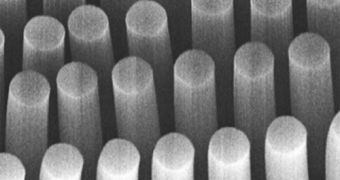A collaboration of US researchers announces the development of a new diagnostics tool against cancer. The approach works by analyzing a small blood samples within a very short time frame. It then alerts doctors as to whether the results are positive or negative.
The microfluidic device may provide healthcare experts with the necessary tools they need to determine whether a patient's cancer has spread throughout the body, or if it remained confined to its original location.
Having this ability would greatly help doctors begin treatments as soon as possible, therefore increasing patients' chances of survival. The new tools developed in the United States may also be of great help for the developing world, where specialized diagnostics equipments are very rare.
Scientists at the Harvard University and the Massachusetts Institute of Technology (MIT) present their new instrument in the March 17 online issue of the esteemed scientific journal Small.
The device is the size of a dime, and experts say that a few tweaks could make it capable of detecting dangerous microorganisms such as the HIV virus, the main cause of AIDS. The first prototype was build nearly four years ago.
It was developed in the lab of Harvard-MIT Division of Health Sciences and Technology member Mehmet Toner, who is also a professor of biomedical engineering at the Harvard Medical School.
With the help of MIT associate professor of aeronautics and astronautics Brian Wardle, Toner developed an improved version of his old microfluidic device, which initially contained thousands of silicon posts, or pillars, through which blood was circulated.
The nanoscale pillars were laden with antibodies, that trapped the cancer cells, therefore revealing their presence. But not all target cells were being fixed to the posts. As such, the team decided to use another material instaed. Wardle, who is an expert in designing nano-engineered advanced composite materials for aircraft, proposed studding the new versions of the microfluidic device with permeable carbon nanotubes.
“Of all deaths from cancer, 90 percent are not the result of cancer at the primary site. They’re from tumors that spread from the original site,” Wardle explains. With the new approach, it could be possible to detect cells that breakaway from the original tumor site faster than ever before.
“Anything you can do to improve capture efficiency, or anything novel you can do to get the particles to interact with a surface more effectively, will help with sample preparation,” explains Rashid Bashir.
The expert, who is the director of the Micro and Nanotechnology Laboratory at the University of Illinois in Urbana-Champaign, was not a part of the new study.

 14 DAY TRIAL //
14 DAY TRIAL //